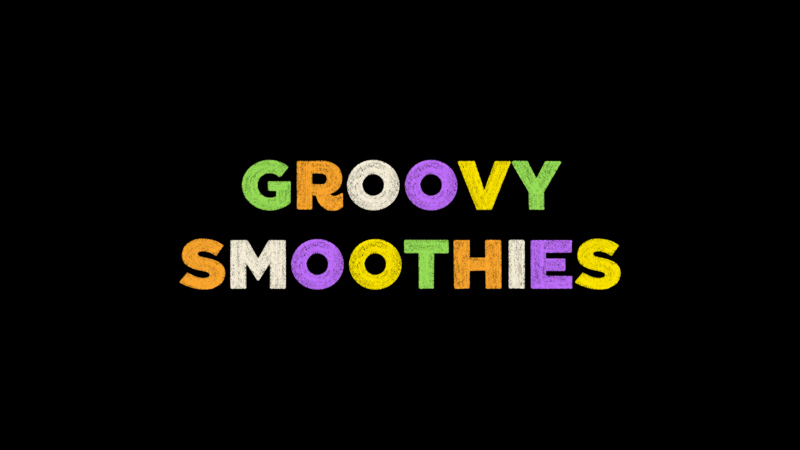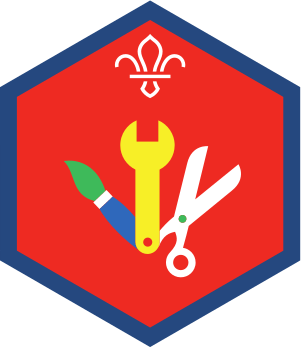
Groovy smoothies
You’ll need
- Chopping boards
- Knives
- Paper cups
- Access to water
- Tables
- Something to protect surfaces (for example, newspaper or tablecloths)
- Sponges
- Several PAT-tested blenders
- Smoothie ingredients
What makes up a healthy lifestyle?
Learn about living healthily by heading over to our healthy lifestyles page.
Healthy top tipsGet prepped
- When shopping for your smoothies, include fruit, vegetables, milk/yoghurt, juice and cocoa powder. Avoid common allergens like peanuts, seafood and sesame.
- The person leading the activity should thoroughly wash all of the fruit and vegetables in the cold water. They should then wash each chopping board and the containers on each blender in the hot soapy water, before rinsing with more cold water.
- If you have fruit or vegetables that need peeling or chopping with a sharp knife, like carrots, the person leading the activity should do this now.
- Set up the table with the tablecloth close to a power supply, so the group can plug in their blenders and work on their smoothies.
Smooth movers
- The person leading the activity should explain that they’ll be making smoothies. These are popular drinks that help people get enough of the healthy food they need every day. Show the group the fruit and vegetables that they can use. Tell them that the more portions of different fruits or vegetables they can get into their smoothies, the better.
This is a great chance to introduce the idea of ‘five a day’! Remember that tinned, frozen, and dried all count (and so do beans, though they might not be the best choice for a smoothie). Remind everyone that different fruits and vegetables have different vitamins that we need to stay strong and healthy, especially while we grow. For example, citrus fruits like oranges are packed full of vitamin C, while carrots have something that our bodies convert to vitamin A (which keeps our eyes healthy).
- Everyone should get into groups. Each group should look at the ingredients and decide what flavour smoothie they’re going to make.
It’s a good idea for a grown up to gently guide people away from choices that are likely to be unsuccessful. It’s OK if people are keen to use the cocoa powder – help them think about which fruits would work in their chocolate smoothie (we like banana or berries). If anyone’s feeling adventurous and wants to get stuck in with root vegetables like carrots, juice is probably a better choice than milk.
- The person leading the activity should go between the groups and give them some safety knives, a clean chopping board and the ingredients they need for their smoothie mix. Everyone should chop up the ingredients with the knives on the boards. They should try to make tougher ingredients like apple or carrot as small as they can.
Remind everyone that each smoothie should be healthy, smooth and tasty. Big lumps of chocolate and broccoli aren’t fun to drink!
- The person leading the activity should check that the blenders are clean and are working as they should.
- With supervision, everyone should add their chopped ingredients and some liquid (milk or juice) to the blender. Someone should hold the lid on each blender as the smoothies are being made. Stop blending every ten seconds to see what the smoothie looks like. If it is too thick, add a little liquid; if too thin, add a little food.
If there are more groups than blenders, some groups will have to wait while some groups are blending, and each blender must be cleaned again in hot, soapy water after use. While the groups who aren’t blending are waiting, they should come up with a funny name for their creation (e.g. a mixture of banana, cocoa, orange and yoghurt might be a ‘Sludgie’). Those who’ve blended must wait for the others should do the same.
- When the smoothies are ready, they should be liquid enough to pour into cups. All of them should have a name and everyone should then try them all.
If there’s time, you could have a vote on who made the tastiest smoothie, who made the smoothest smoothie, and who made the healthiest smoothie.
Reflection
The group made smoothies using fruits, vegetables and a few other ingredients. Why are fruits and vegetables the ideal ingredients for smoothies? We know about them being healthy and needing to eat them, but what about how they are made and what they feel like to touch? Would having daily smoothies make it easier for you to get your five-a-day?
Once the smoothies were finished, everyone should’ve tried them all. Which group made the best smoothie, in your opinion? Would you be able to make a smoothie on your own? What would you change next time?
Safety
All activities must be safely managed. You must complete a thorough risk assessment and take appropriate steps to reduce risk. Use the safety checklist to help you plan and risk assess your activity. Always get approval for the activity, and have suitable supervision and an InTouch process.
- Food
Remember to check for allergies, eating problems, fasting or dietary requirements and adjust the recipe as needed. Make sure you’ve suitable areas for storing and preparing food and avoid cross contamination of different foods. Take a look at our guidance on food safety and hygiene.
- Sharp objects
Teach young people how to use sharp objects safely. Supervise them appropriately throughout. Store all sharp objects securely, out of the reach of young people.
- Cooking
Teach young people how to use cooking equipment safely. Supervise them appropriately throughout. Make sure it’s safe to use and follow manufacturers’ guidelines for use.
- Water games and activities
Be careful when doing activities with, in, or near water. Check surfaces and reduce the risk of slipping where possible. Make sure you have appropriate supervision for this activity.
To make things harder for seasoned smoothie smushers, try only providing ingredients that are in season at the time.
Provide some example smoothie for those who’re struggling to come up with a recipe and a name for theirs.
Those who have sensory difference or get distracted easily may need help chopping ingredients and using the blenders. The person leading the activity should step in and do these steps where necessary.
Blenders can be noisy. Have a quiet space for people to go to if they’d like some time away from the activity.
Double-check that the ingredients on the table are safe for the group to eat. Ask again about allergies and food intolerances. Avoid cross-contamination with the blenders by washing each one thoroughly after use with hot, soapy water.
There are lots of reasons people might find talking about food tricky, including eating disorders, disordered eating, sensory sensitivities, and a lack of access to food or cooking facilities. Be sensitive in how you approach this activity – some people may appreciate knowing you’ll cover the topic in advance, you might need to take extra care to avoid talking too negatively about food (including food higher in sugar or fat), or you may want to keep it general and avoid asking people about their personal experiences, for example.
All Scout activities should be inclusive and accessible.
Those that have made smoothies should try to come up with a brand for their creation. Think of a smoothie logo, a design and materials for the packaging and make a label listing the ingredients.
Groups that don’t have a blender or an electricity supply, or groups that do but would like to try an alternative method, should watch this video about making smoothies… in a football!
Let the groups choose their own smoothie ingredients. Only step in to advise them on mixtures that are best left untried!




